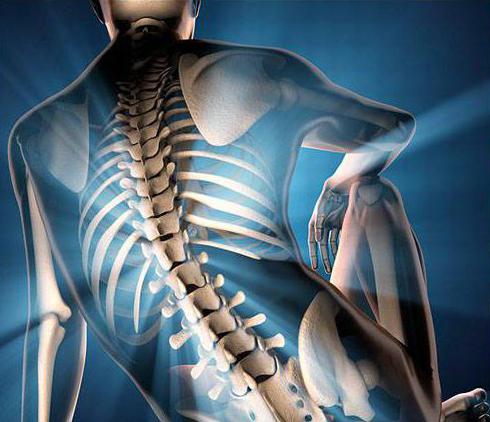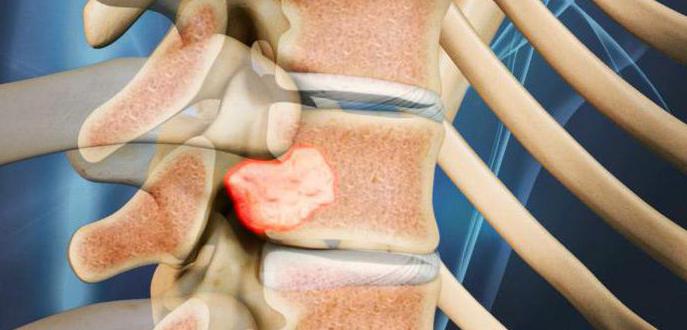An x-ray of the lumbar spine is the simplest and most affordable solution that allows you to perform a high-quality diagnosis of injuries and diseases that develop in the presented area. In what cases is this technique used? What does preparation for an x-ray of the lumbosacral spine suggest? How are the results of the study deciphered? All this will be discussed in our publication.
In what cases is an x-ray prescribed?
The doctor may send the patient for an X-ray examination if you suspect the presence of the following pathologies:
- curvature of the spine ;
- pain in the lumbar region;
- a feeling of numbness or weakness in the spine;
- the development of inflammatory processes;
- the appearance of an intervertebral hernia;
- abnormal changes in the formation of the spinal column.
It is worth noting that an x-ray of the lumbar spine makes it possible to identify degenerative processes in bone tissues, see injuries, consider tumors, foci of inflammation and infections. However, this technique does not allow to study the structure of ligaments, muscles and spinal cord. For these purposes, other, more informative diagnostic solutions are used. At the same time, the price of an x-ray of the lumbar spine is low. Often, such diagnostics are performed free of charge if there is an appropriate doctor's referral. Therefore, the technique is available to the bulk of the population.
How to prepare for an x-ray of the lumbar spine?
Any medical procedure needs preliminary measures. The study referred to in our publication is no exception. What is the preparation for an x-ray of the lumbosacral spine? It is worth noting the following:
- A few days before the diagnosis, it is recommended to abandon the use of products that provoke the formation of an abundance of gases in the intestine. It is important to exclude black bread, potatoes, legumes, and milk from the diet. It is also not worth consuming carbonated drinks.
- Preparation for an x-ray of the lumbar spine includes the use of enzyme preparations. We are talking about such pharmacological agents as Mezim, Festal, Enterosgel. If the effect of bloating does not disappear, you can additionally take activated charcoal.
- Before performing the diagnosis, it will not be amiss to cleanse the intestines with an enema or with laxative drugs. It is worth resorting to such decisions not only in the evening, on the eve of the study, but also immediately before radiography.

A doctor can explain in detail how to prepare for an x-ray of the lumbosacral spine. In addition to the above actions, the specialist will indicate additional conditions that make it possible to increase the information content of the image. This includes emptying the bladder, as well as removing metal products from the body, all kinds of jewelry. Ignoring such recommendations will delay x-rays. The result is the formation in the images of shaded areas.
Running diagnostics
How do x-rays of the lumbar spine? Diagnostics is performed in a specialized office. When visiting the treatment room, the patient is required to clearly comply with all the requirements of the laboratory assistant. A visitor to the office exposes the body to the waist and is located on a special table. In this case, the diagnosis can be carried out not only in the supine position, but also while sitting. Sometimes, in order to obtain the most reliable results, the doctor requires the patient to perform a deflection in the lower back and move the knees to the chest.
To qualitatively make an x-ray of the lumbar spine, the patient must try to maintain absolute immobility. Otherwise, the black and white shadow image may be blurry.
Features of the study
Radiography of the lumbosacral spine takes about 15-20 minutes. This time is enough to create a series of pictures that are sent to the attending physician for decryption. Once the results are obtained, the patient once again visits the doctor, who gives an opinion on the nature of the pathology and draws up a treatment program.
X-rays are allowed several times. It all depends on the dose received. The need for re-examination may arise when the patient's condition worsens or the quality of the images is poor.
Radiography Techniques
Diagnosis of the condition of the spine in the lumbosacral can be carried out using several techniques. Allocate a direct, lateral and oblique version of the study. It is about the patient taking different body positions. For example, the use of the technique of lateral projection makes it possible to identify how well joints are bent and unbent. In turn, a direct projection looks like the best solution for assessing the correct posture and mobility of the entire spine.
Deciphering the results
Thanks to the X-ray of the lumbar spine, the doctor is able to examine such pathologies in the pictures:
- Anomalies in the structure of bone tissue - on the black and white image visible processes of the vertebrae, which are neoplasms. The presence of the latter leads to a distortion of posture.
- Osteochondrosis - the picture shows a change in the size of the cracks between the vertebrae and a violation of the normal position of the discs.
- Deforming spondylosis - a pathology is detected by deciphering the results of an X-ray examination of the ossifications that form near the ligaments of the joints.
- Arthrosis - on an x-ray, the signs of the disease are reflected in the form of bone growths.
- Intervertebral hernia - to distinguish pathological changes characteristic of the disease in a black and white image is quite difficult. Violation can be noted in the presence of wedges between the vertebrae. To confirm the diagnosis often requires additional magnetic resonance imaging.
- Tuberculous spondylitis - the picture shows damage to the edges of the vertebrae, as well as the presence of cavities in their structure.

Contraindications
X-ray of the lumbar spine is prohibited for pregnant women. Performing a study during the period of bearing a child can most unpredictably affect the condition of the fetus. Doctors also do not advise resorting to the technique during breastfeeding. If it is impossible to refuse such a diagnosis due to certain reasons, in this case the pregnant woman’s belly is protected using a specialized apron with lead plates.
A relative contraindication is the presence of excess weight in the patient. Excessive body fat can lead to a decrease in the information content of images.
Contraindications can also include mental problems that cause increased nervous excitability of a person. In such situations, it is difficult for the patient to remain motionless during diagnosis, which is an important point in terms of obtaining reliable results.
Advantages of the technique
X-ray examination has several advantages. Images with diagnostic results are in the form of solid information carriers that can be stored in the medical history for a long time. You can also receive data digitally.
X-ray of the lumbosacral region is available in almost every medical institution. In this case, the picture will be ready within a few hours after the procedure. This point is important when the patient has serious complaints about well-being.
Radiography makes it possible to quickly identify fractures, dislocations, displacements of the intervertebral discs, inflammatory processes in the joints. Thus, there is no need for a CT scan or an MRI, which requires a lot of money.
If a person is not able to independently visit the treatment room, an x-ray can be performed at home. For these purposes, doctors resort to the use of specialized portable devices. The resulting images are no less informative compared with images taken in a hospital.
Alternative diagnostic methods
To assess the condition of the spine in the lumbar region also allow some other studies. When it comes to diagnosing complex pathologies, computed and magnetic resonance imaging comes to the aid of doctors. These methods are more informative compared to conventional x-rays. Based on their results, it is possible to clearly distinguish all kinds of hernias, pathological neoplasms, bone tissue deformities.
As for the disadvantages of CT and MRI, it must be said about the need for prior administration of contrast agents into the patient's body. However, such actions can not be resorted to in all clinical cases. The problem is the presence in individuals of specific allergic reactions to the used contrast composition. Among other things, the load on the patient's body from radiation in the case of the application of such techniques is also quite high. Therefore, the same contraindications apply here, similar to radiography.
Finally
As you can see, x-ray of the lumbosacral spine reveals a wide range of diseases and pathological changes in the structure of bone tissue. In order to rely on obtaining the most reliable results of the study, the patient needs to pay attention to the features of preparation for diagnosis, as well as listen to the recommendations of the doctor. Only in this case, specialists will be able to correctly interpret the x-ray results.